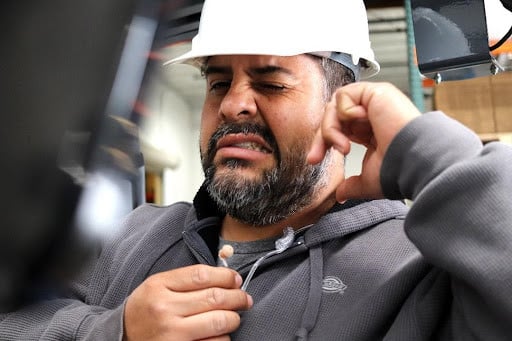What Your Customers Need To Know About Two-Way Radio Care

Not everyone knows how to use a two-way radio, and that’s okay: it gives you the opportunity to guide them and solidify your position as their communications expert. If we had to summarize the key points we think you should include in those discussions on two-way radio care, it would be these.
Maintain Proper Distance
One of the most common mistakes users make is gauging the appropriate distance to keep between themselves and their radios. Hold a radio too close and you can muffle the audio, while too far away makes your voice faint and unable to transmit.
Clear communication comes from holding a radio roughly one to two inches from your mouth while speaking directly into its microphone.
Use the Right Channels
Users should always check to see if the channel they’re on is clear before they transmit. This simple step can prevent overlapping communication so that their messages are received without interference.
In busy environments where multiple teams may be using radios, adhering to channel protocols avoids unnecessary confusion.
Don’t Overcharge Batteries
Battery maintenance is a critical aspect of any two-way radio care. Overcharging batteries can reduce their lifespans and performance, which is why users should not only follow manufacturers’ guidelines for charging them, but also ensure their radios are disconnected once fully charged.
Encourage your customers to perform regular battery health checks to prevent unexpected downtime and maintain a strong communications network.
Handle Radio Antennas With Care
As you know, without an antenna, you don’t have a functional radio. Talk to your customers about how to keep their radios working by checking their antennas for damage, as well as avoiding actions that could interfere with their antennas’ performance, like twisting them, bending them, or tampering with them. At minimum, antenna damage reduces a radio’s coverage area and clarity — at most, it turns a radio into a giant paperweight.
Perform Regular Maintenance
Beyond batteries and antennas, users should be aware of regular maintenance checks they can perform on their two-way radios to verify that other components are functioning and that radios are being cleaned.
Your customers will appreciate this knowledge because they can avoid more costly radio repairs or replacements. In return, this builds trust with your brand and makes your customers more likely to choose you for repair work their team can’t manage internally.
Use Appropriate Accessories
Users will unquestionably need assistance with radio accessories — not only to understand what options are available, but whether or not they’re compatible with the particular models that they already have or want to purchase.
Incompatible accessories run the risk of causing damage to radios and negatively affecting their performance, which is why it’s a good idea to educate your customers on earpieces, headsets, palm mics, and holsters.
Plan for Environmental Factors
We highly recommend asking your customers where they plan to use their radios. It’s easy to think that a “tough radio” can deal with the elements, but it’s a good idea to understand the exact environmental factors that could potentially influence that radio’s performance.
Many customers don’t know what ingress protection (IP) is, and why its rating is so important. Help them understand that IP67 is good for water and dust protection, while intrinsically safe options prevent radios from interacting with gas, water, and other particulates.
This protects both your workers and their radios, and is an easy way to maintain good two-way radio care.
Follow Proper Communication Protocols
Do your customers know the appropriate language, codes, and call signs to use over their radios? These help avoid unnecessary chatter and ensure that transmissions are received and understood.
If they don’t already know them, encourage your customers to learn standard communication protocols.
Know Emergency Procedures
Radio users need to know what emergency features are available on their two-way radios for a couple of reasons: first, because these features often need to be preprogrammed before radios are shipped; and second, because they help users establish emergency procedures based on the actions they can perform.
Regular safety drills and training sessions will then reinforce these plans and prepare users for real-life situations.
Take Time To Train and Familiarize
Finally, it’s recommended that users take the time to practice with all of the features made available to them on their specific radio models, from basic operations and emergency features up through advanced capabilities like GPS tracking.
Regular training and familiarization will ensure proper use and prevent accidents.
Promote Two-Way Radio Care To Become a Dealer of Choice
By adhering to these safety tips, your customers can maximize the efficiency and longevity of their two-way radios. Educating users about them is the best way to establish yourself as their dealer of choice for future purchases and guidance.
If you need radios for your inventory, we’re here to help! RCA has world-class options that easily compete with — or even outperform — models from other major lines. Contact us today to talk about portables, mobiles, base stations, and repeaters that are in stock and ready to ship!
